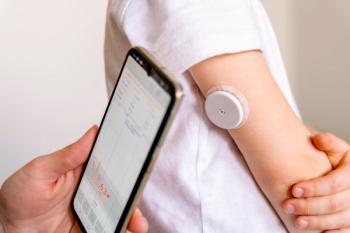
Biosimilar Breast Cancer Drug Shows Comparable Efficacy
Inferiority ruled for biosimilar of trastuzumab in the treatment of HER2-positive early breast cancer.
Top-line results from a phase 3 study of the biosimilar drug ABP 980 ruled out inferiorly compared with trastuzumab in patients with human epidermal growth factor receptor 2-positive (HER2-positive) early breast cancer.
ABP 980 is a recombinant DNA-derived humanized monoclonal immunoglobulin G1 kappa antibody being developed as a biosimilar to
Researchers enrolled 725 randomized patients into the study, with 364 participants in the ABP 980 group and 361 in the trastuzumab group. During the neoadjuvant phase, patients received run-in chemotherapy with the drugs epirubicin and cyclophosphamide (EC) every 3 weeks (Q3W) for 4 cycles.
After run-in chemotherapy, patients with adequate cardiac function were randomized 1:1 to receive ABP 980 or trastuzumab, plus paclitaxel, every Q3W for 4 cycles. Three to 7 weeks after the last dose of ABP 980 in the neoadjuvant phase, surgery was performed and the pathologic complete response (pCR) was analyzed.
In the adjuvant phase, patients received ABP 980 or trastuzumab following surgery ever Q3W for up to 1 year from the first day the drug was administered in the neoadjuvant phase. Those who received ABP 980 during the neoadjuvant phase continued to receive the drug every Q3Q for the adjuvant phase.
Patients given trastuzumab during the neoadjuvant phase received either ABP 980 or trastuzumab every Q3W for the adjuvant phase. Researchers assessed the clinical equivalence of the drugs by comparing the confidence interval of the risk difference and risk ratio of the pCR in breast tissue and axillary lymph nodes with the prespecified equivalence margins.
The results ruled out the inferiority of ABP 980 compared with trastuzumab; however, the findings were unable to rule out superiority based on its primary efficacy endpoint of the difference of the percentage of patients with a pCR.
“We believe this study confirms no clinically meaningful differences between ABP 908 and trastuzumab, and we look forward to continued discussion with regulatory authorities,” said Sean E. Harper, MD, executive vice president of Research and Development at Amgen. “Biosimilars are approved based on the analytical, nonclinical and clinical data, and we believe that the totality of the evidence we’ve generated supports ABP 980 as highly similar to the reference product.”
The prespecified equivalence margin of the primary endpoint was +/- 13% and the observed upper end of the confidence interval was 13.4%.
The overall adverse events seen in the study were comparable between the 2 drugs. In the neoadjuvant phase that included chemotherapy, there were more serious adverse events reported in the ABP 980 group.
But, a majority of these were reported by investigators as unlikely to be related to the investigational drug. In the adjuvant phase, which did not include chemotherapy, serious adverse events were comparable between the treatment groups.
The overall results showed comparable immunogenicity.
“These results provide significant clinical evidence that ABP 980 could be an important biosimilar treatment option for patients with HER2-positive early breast cancer,” said David Nicholson, chief research and development officer at Allergan. “Allergan is committed to the continued development of ABP 980 and other biosimilars that provide safe, high-quality, and effective therapies in key disease areas.”
Newsletter
Stay informed on drug updates, treatment guidelines, and pharmacy practice trends—subscribe to Pharmacy Times for weekly clinical insights.





















































































































































































































